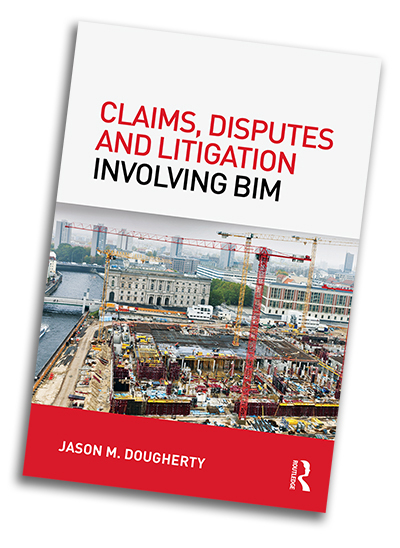Sarah Rock, an associate in the construction and projects department at law firm RPC, reviews Claims, Disputes and Litigation involving BIM by Jason Dougherty, a territory manager for Autodesk.
With only one actual BIM dispute having made it to court in the US (which in the end was actually settled out of court) this book does not exactly do what it says on the tin!
What this book does do, however, is offer a potentially valuable insight into how the US construction world has adopted BIM by running through the processes put in place in various states. Alongside this it provides a background to traditional construction claims in the US and considers how BIM may impact on these.
The preface states that the book intends to bridge the divide between technology and law. With both the American construction and legal systems being somewhat removed from the English systems, some may argue that this book is of little use in the UK. However, if read with a view of how best to continue the implementation of Level 2 and perhaps work towards Level 3 BIM in the UK, what this book could offer is a valuable insight into how others are doing it: a cross-Atlantic collaboration and sharing of knowledge if you will.
One area where Dougherty offers a US view on a current UK hot topic is in relation to the standard of skill and care regarding BIM. At present what this standard is in the UK is still slightly hazy. Our approach at present seems to rely on BIM accreditation courses but there is much public debate about the validity of these qualifications and the standard of said courses.

Some of the US BIM guidance is state-specific and there are various country-wide sources, but as the author points out, collectively and individually these sources would appear to support expectations of standard of care and workmanlike performance regarding BIM/VDC that include:
- The use of BIM authoring tools as the primary production tool for producing more consistent and better coordinated 2D contract document sets; and
- The use of project review tools to improve systems coordination via 3D clash detection.
With regard to the book’s title, the author acknowledges that both reported case law and popular reports of BIM/VDC claims or disputes are sparse. Dougherty goes on to confirm that BIM itself will not change the legal landscape, noting that the requirements for bringing a claim in the US – “entitlement, causation, damages” – still apply.
What BIM and digital construction can do in this area of construction law, both here and in the US, is provide a fantastic audit trail should a dispute arise. It is possible even that such a detailed comprehensive audit trail could hopefully result in less disputes as the facts would potentially be clearer to assess and liability easier to assert.















